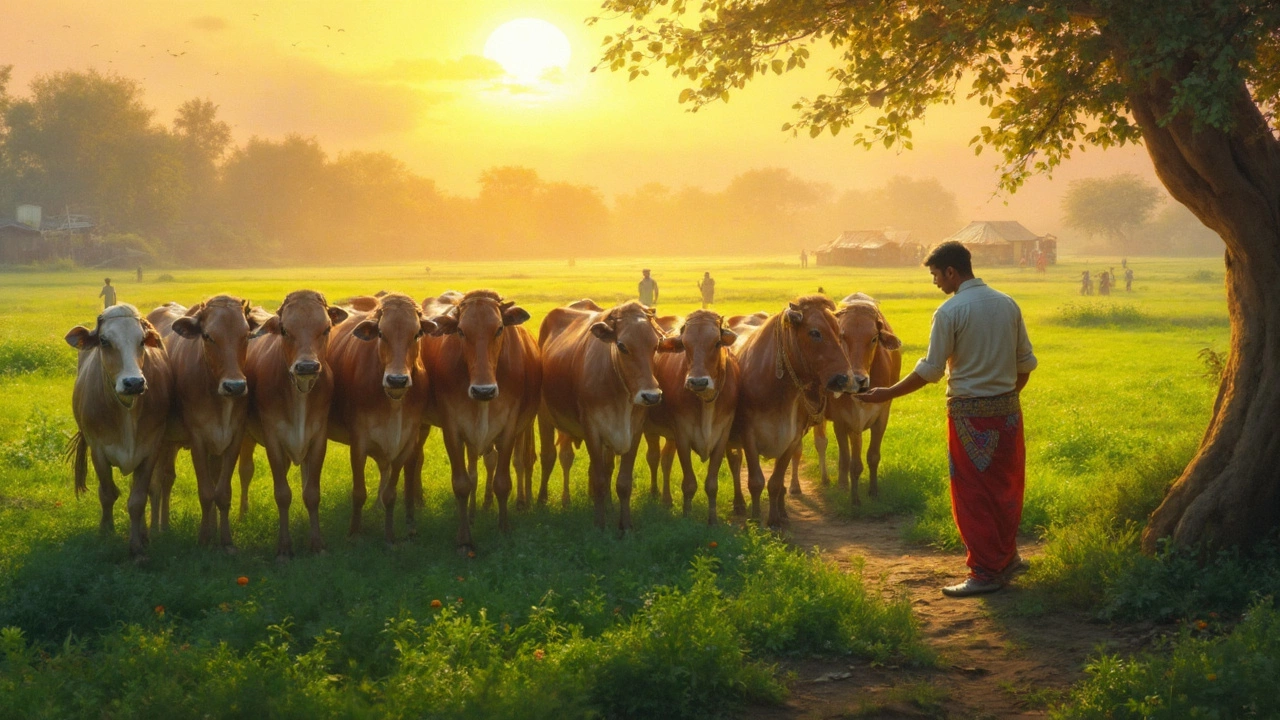Cow Farming: A Practical Guide to Starting and Growing Your Cattle Business
If you’ve ever thought about turning a few acres into a milk‑making machine, you’re in the right place. Cow farming doesn’t have to be a mystery; it’s a series of everyday choices that add up to big results. Below you’ll find the basics you need to get going, plus tips to keep the herd healthy and the cash flow steady.
Getting Started: Choosing Cows and Setting Up Your Farm
First, decide what kind of cows fit your goals. Dairy breeds like Holstein, Jersey, or Guernsey give more milk, while dual‑purpose breeds such as Brown Swiss can provide both milk and meat. Look for animals with good health records and a calm temperament – they’re easier to handle and recover faster from stress.
Next, size matters. A small starter farm can work with 5‑10 cows; each animal needs roughly 1.5 to 2 acres for grazing, plus space for a shelter. Build a simple shed that protects against rain and wind, and make sure it’s well‑ventilated. A clean water source is a must; cows drink 30‑50 liters a day, so a reliable trough or automatic system saves time.
Don’t forget the fencing. Strong, smooth‑wired fences keep cows in and predators out. Check the fence regularly for broken wires – a small gap can turn into a big loss.
Running a Profitable Cow Farm: Daily Care, Feeding, and Milk Management
Feeding is the backbone of milk production. A balanced diet includes high‑quality forage, like alfalfa or clover, plus a concentrate mix of grains and protein. Monitor each cow’s body condition; an over‑ or under‑weight animal produces less milk and can develop health problems.
Milking schedule matters too. Most farms milk twice a day, roughly 12 hours apart. Consistency helps cows stay comfortable and boosts output. Keep the milking area clean, use sanitized equipment, and store milk at 4 °C or lower right after collection.Health checks should be routine, not reactive. Vaccinate against common diseases such as foot‑and‑mouth and brucellosis, and set up a deworming plan. Spot any signs of lameness, mastitis, or loss of appetite early – a quick vet visit can prevent big losses later.
Record keeping may sound boring, but it’s essential. Track feed amounts, milk yield per cow, breeding dates, and health events. Simple spreadsheets or farm‑management apps let you spot trends and make smarter decisions.
When it comes to selling milk, explore local dairy cooperatives, direct‑to‑consumer sales, or processing it into cheese and yogurt. Each option has different price points and requirements. If you’re close to a town, a small processing unit could add value and attract premium buyers.
Finally, think about the long term. Plan for calf rearing, replacement heifers, and eventual herd expansion. Good genetics, proper nutrition, and low stress levels create a cycle of healthy cows that keep producing year after year.
Cow farming can start small and grow into a solid income stream if you stick to the basics: choose the right breed, give them clean water and balanced feed, keep the environment safe, and stay on top of health and milk records. Follow these steps, stay patient, and watch your herd turn into a reliable source of milk and profit.

How Much Profit Can You Make from 10 Cows?
Exploring the potential profits from owning 10 cows, this article delves into the economics of cow farming. Discover practical tips for maximizing earnings and understand the market dynamics affecting cattle profitability. Learn about costs, revenue streams, and smart strategies to boost your return on investment. Whether you're curious about rural investments or planning to diversify your property interests, find out how cows can add value.




